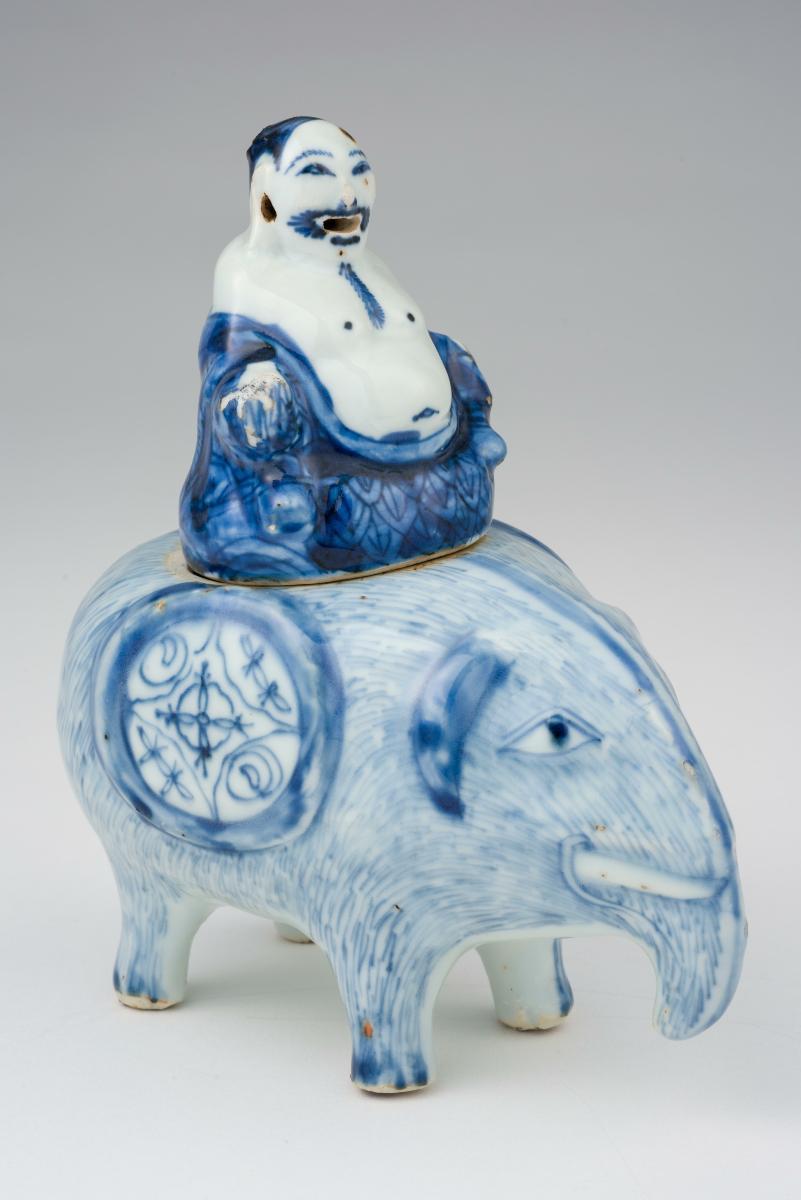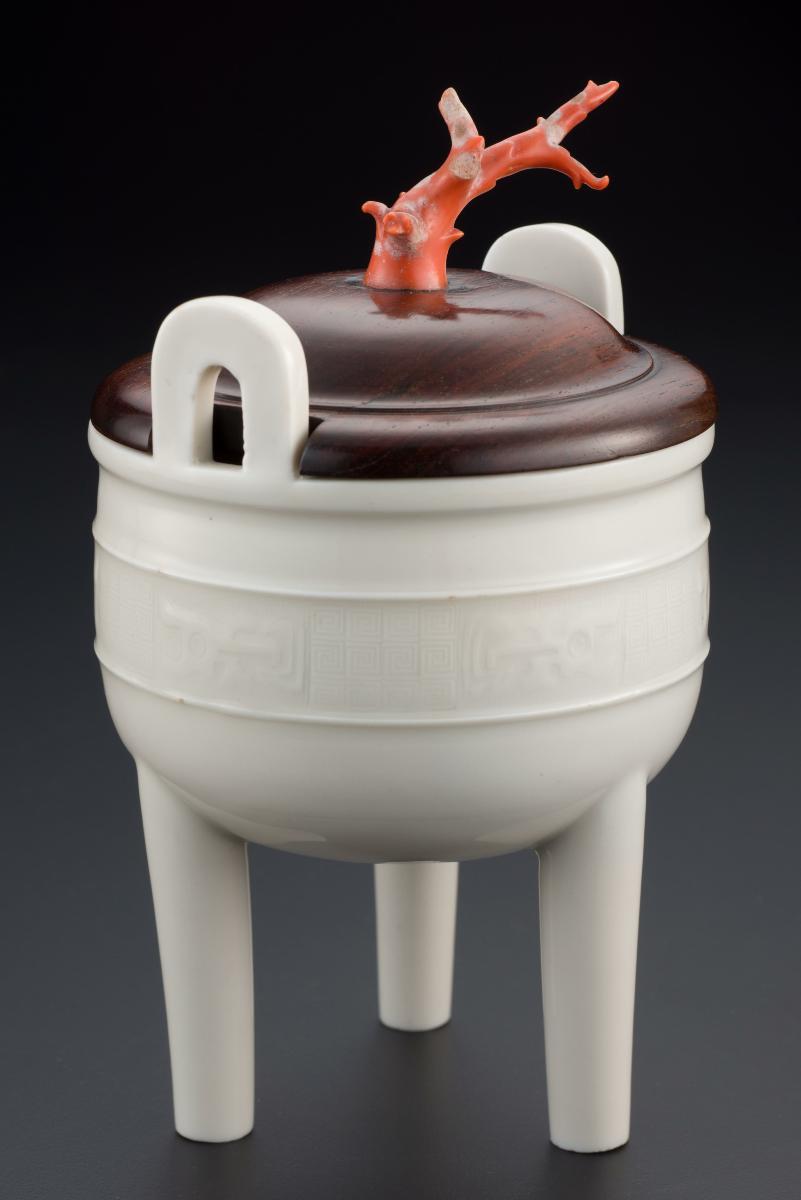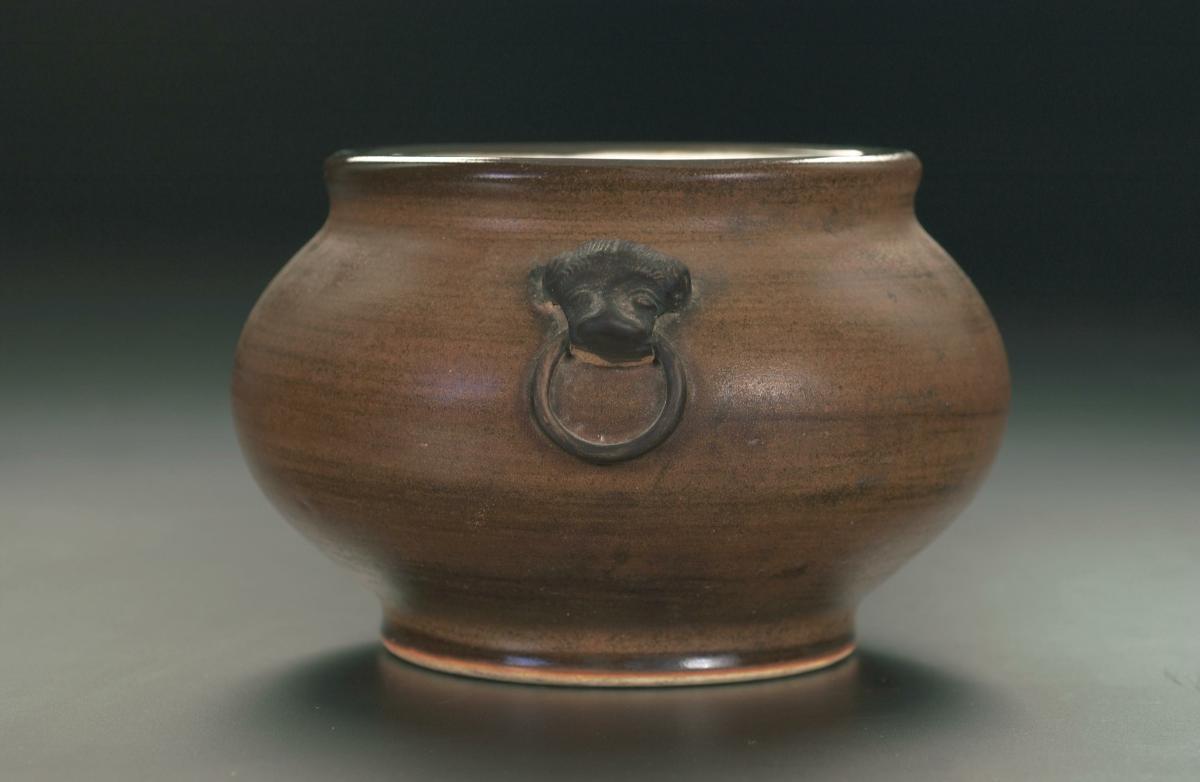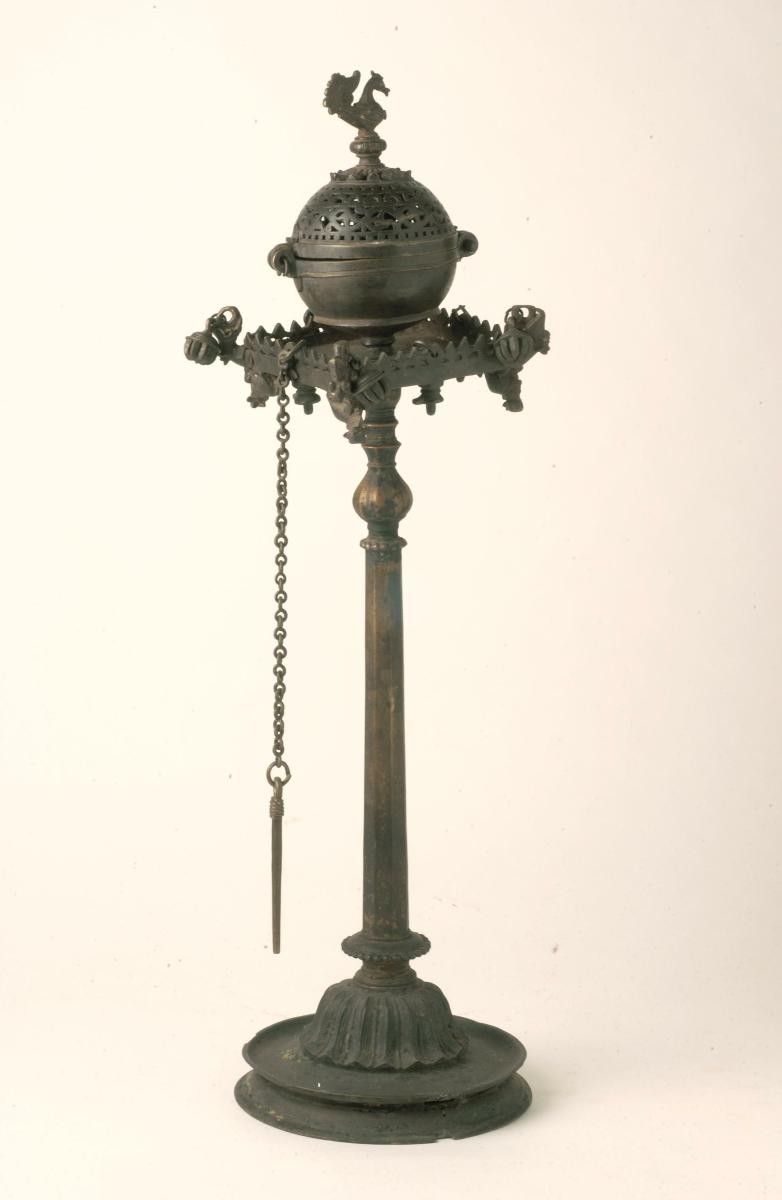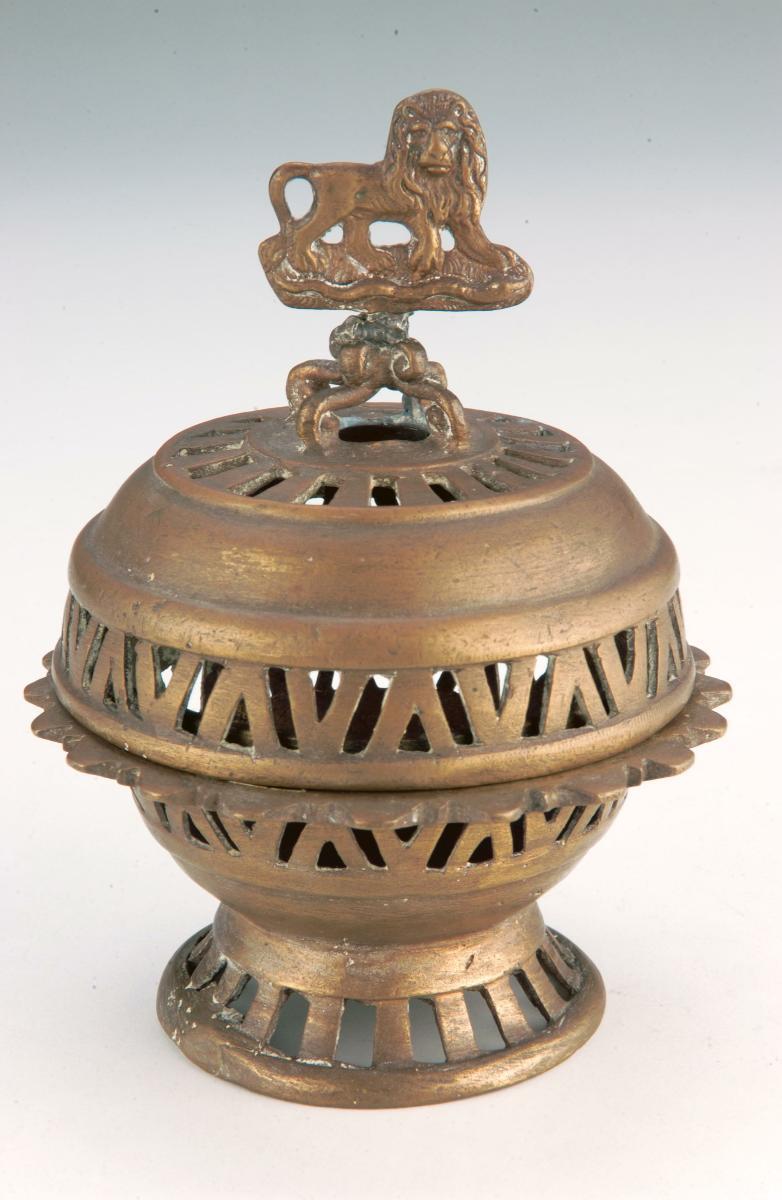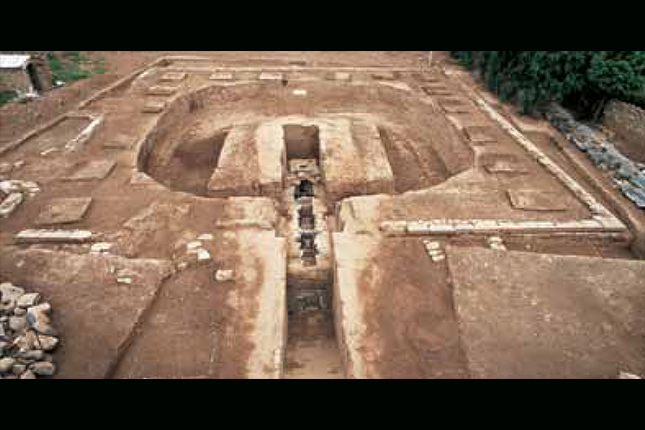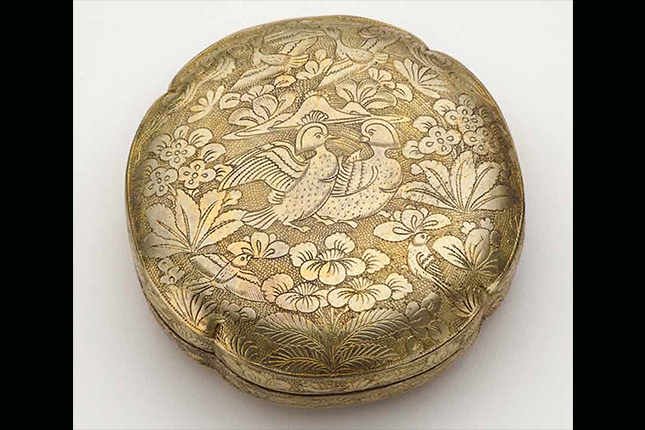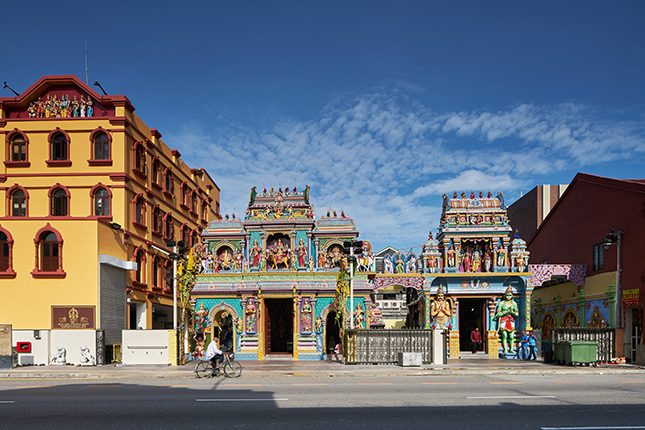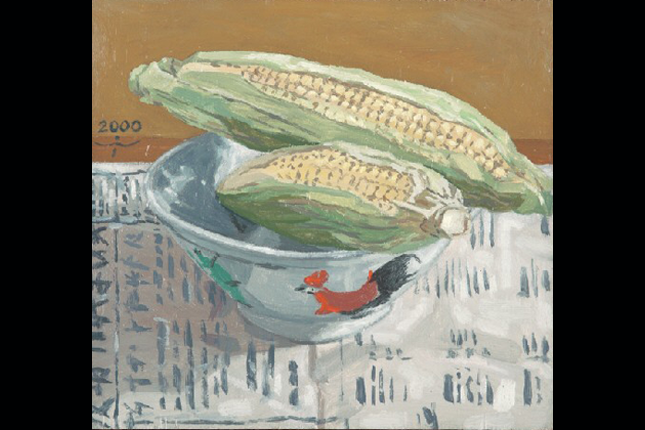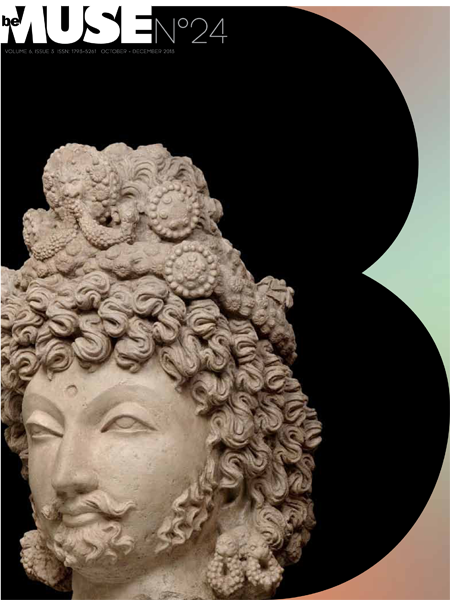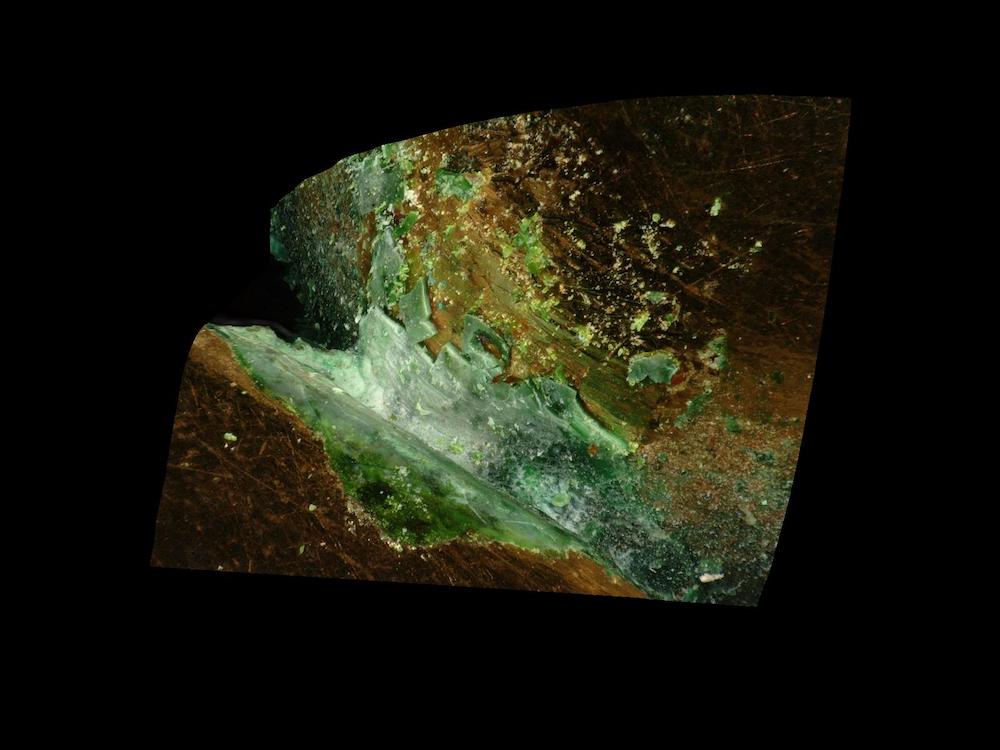The incense burner consists of two parts: the top is modelled as a portly figure while the base takes the form of an elephant. The squat proportions of the elephant imbue the animal with a whimsical charm, and suggest that the potter created the animal based on his imagination. The association of elephants with Buddhism as well as their embodiment of strength and wisdom, may have contributed to their popularity as an ornamental motif in Chinese porcelain.The object belongs to a type of Chinese porcelain that was exported to Japan from about 1620 to 1645 and popularly referred to as ko-sometsuke (“old blue and white”). Despite their rougher appearance, these porcelains were deeply appreciated by the Japanese and used in their tea ceremonies. Incense burners formed part of the ceremonial paraphernalia and those modelled as animals seem popular in Japan.




